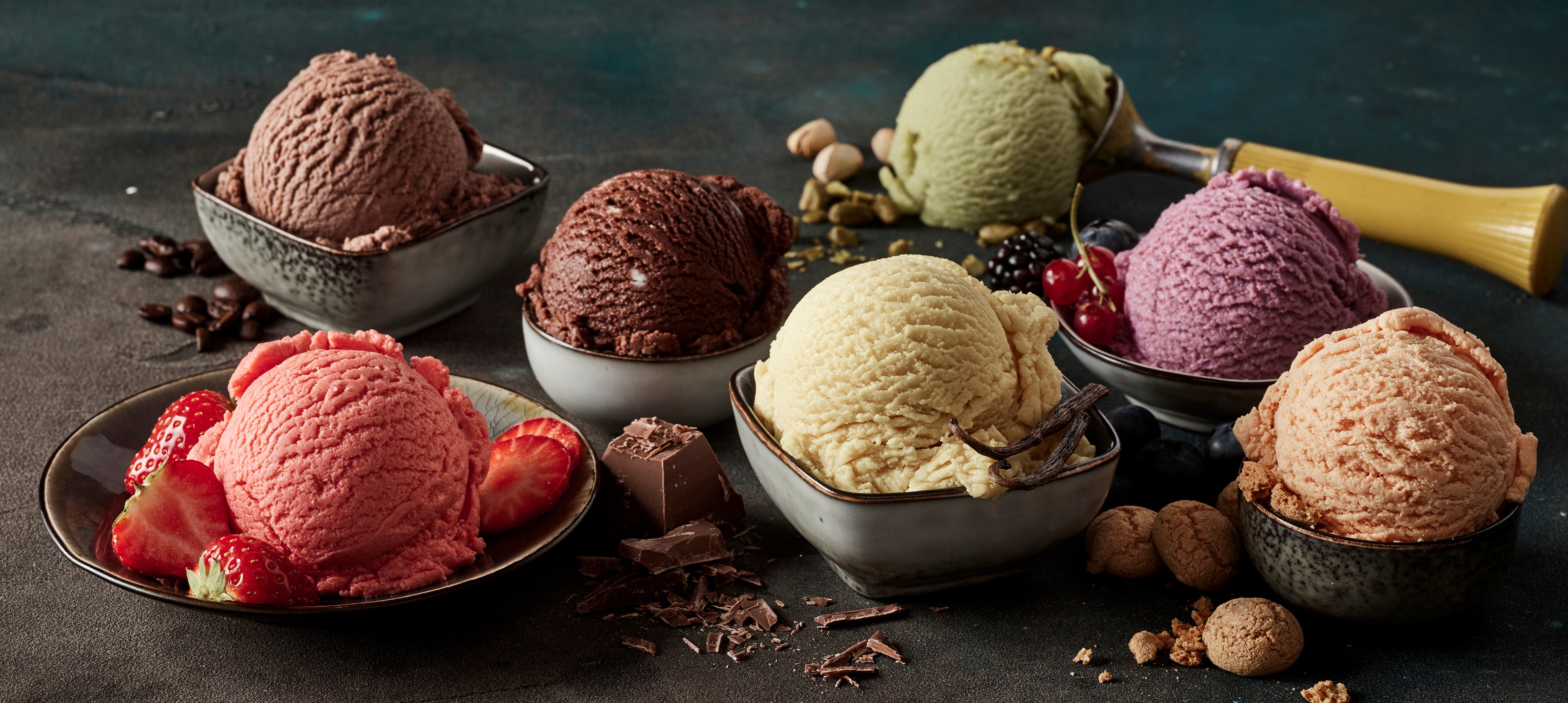Sugar and Ice cream

The Important Role of Sugar in Ice Cream
When making ice cream, one of the most critical components is sugar. However, its role goes far beyond simple sweetness. Understanding the science behind the various types of sugar in ice cream is crucial for creating a product with the ideal taste and texture. In this post, we'll explore why sugar is so relevant.
To begin with, the two most important contributions of sugar in ice cream are:
- Sweetening Power (POD): This is a sugar's ability to provide sweetness.
- Freezing Point Control (PAC): This is a sugar's ability to lower the freezing point of water.
Balancing Sweetness and Texture with Sugar
If sweetness were the only goal, one could use artificial sweeteners. However, sugars provide the invaluable property of antifreeze power (PAC). This is the ability to control the exact temperature at which the water in the mix freezes, which is something artificial sweeteners cannot do.
Consequently, frozen treat makers rarely use only one type of sugar. Instead, they create a blend to achieve the perfect balance. For instance, between two ice creams at the same temperature, the one with more sugar (or sugars with a higher PAC) will be softer. By mastering how different sugars work, you can perfectly balance every recipe, from decadent chocolates that tend to harden to liqueur-based ice creams that are natural antifreezes.
Common Types of Sugar Used in Ice Cream
Each of the following ice cream sweeteners has unique properties. The baseline for measuring both POD and PAC is sucrose, which has a value of 100 for both.
Sucrose (Table Sugar)
As the most common sugar, sucrose is affordable and easy to use, making it the gold standard for sweeteners. Its main drawback, however, is its tendency to crystallize at low temperatures, which can make ice cream feel gritty. For this reason, artisans almost always combine it with other anti-crystallizing sugars.
Lactose (Milk Sugar)
The natural sugar of milk is Lactose. It has a low sweetening power (POD 16) but the same antifreeze power as sucrose (PAC 100). Because it can absorb a large amount of water, an excess of lactose can result in a "dry" or "sandy" texture, so it must be balanced carefully.
Corn-Derived Sugars in Ice Cream
This category includes several important ice cream sweeteners.
- Dextrose: This pure sugar dissolves easily and has a high PAC of 190, making it excellent for softening ice cream. Its low sweetness (POD 70) makes it ideal for fruit sorbets where you want to control hardness without adding too much sweetness.
- Atomized Glucose: When dextrose is combined with other elements like starch, it becomes glucose. We prefer the powdered (atomized) form in ice cream for its ease of handling. Glucose is rated by its D.E. (Dextrose Equivalent), and a higher D.E. means a higher POD and PAC.
- Maltodextrin & Cornstarch: These have very little sweetness but work well as thickeners, especially in recipes with a high liquid content, like those containing liqueurs.
Invert Sugar & Honey
Heating sucrose with an acid creates invert sugar, a liquid sugar with high sweetness (POD 130) and high antifreeze power (PAC 190). Because of this, it is highly recommended for mixes with a high proportion of dry solids, such as chocolate or nuts. Honey is a natural form of invert sugar, and we use it when we specifically want its characteristic flavor in the final ice cream.
Start with a Perfectly Balanced Mix
Understanding how each type of sugar in ice cream works is a craft. To simplify the process, AussieBlends offers a range of perfectly balanced ice cream mixes, including options with no added sugar that utilize sugar alternatives. In short, we take the guesswork out of creating the perfect base for your creations.

